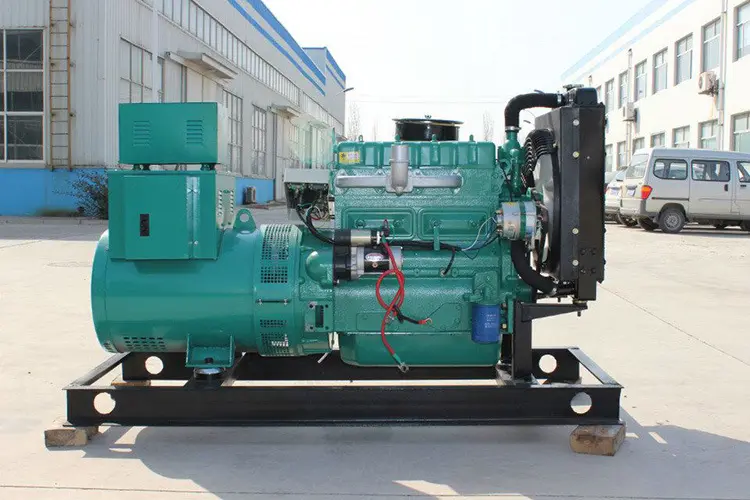Introduction
Diesel generators play a crucial role in providing backup power in various settings, ranging from residential homes to industrial facilities. However, when it comes to operating in dusty conditions, diesel generators face unique challenges that can impact their performance and longevity. Dust and debris can infiltrate the generator system, leading to issues such as reduced efficiency, increased wear and tear, and potential breakdowns. In this article, we will explore the importance of selecting the right diesel generator for dusty environments and highlight key considerations to ensure reliable power supply in such conditions.
Understanding Dusty Conditions and Their Impact on Diesel Generators
Dusty conditions are prevalent in many environments, including construction sites, mining operations, and desert regions. Dust particles can vary in size and composition, but their collective presence poses a significant threat to diesel generators. When dust enters the generator system, it can clog air filters, contaminate fuel, and obstruct cooling mechanisms. This interference can lead to overheating, reduced airflow, and increased friction within the generator components, ultimately affecting its overall performance.
One of the primary concerns related to operating diesel generators in dusty conditions is the compromise of air quality within the system. Diesel engines rely on a consistent flow of clean air to facilitate combustion and maintain optimal performance. When dust particles accumulate in the air intake system, they can disrupt the air-fuel mixture, leading to incomplete combustion and reduced power output. Additionally, dust accumulation can cause abrasion and corrosion within the engine, accelerating the deterioration of critical components.
Another critical aspect affected by dusty conditions is the cooling system of diesel generators. Dust can settle on radiator fins and cooling fans, inhibiting their ability to dissipate heat effectively. As a result, the engine may experience overheating, which not only reduces efficiency but also increases the risk of component failure. In extreme cases, prolonged exposure to dusty conditions can lead to irreversible damage to the generator, necessitating costly repairs or replacement.
Key Considerations for Selecting Diesel Generators for Dusty Conditions
When choosing a diesel generator for dusty environments, several key considerations should be taken into account to ensure optimal performance and longevity. These considerations include the following:
1. Robust Construction: Diesel generators intended for use in dusty conditions should feature a robust and durable construction to withstand the challenges posed by dust and debris. High-quality materials and coatings should be utilized to protect the generator components from corrosion, abrasion, and other forms of damage caused by dust particles.
2. Effective Filtration System: A reliable filtration system is essential to prevent dust ingress into the generator system. Air filters should be designed to capture and retain dust particles of varying sizes while maintaining sufficient airflow to support engine combustion. Regular maintenance and replacement of filters are crucial to ensure the continuous operation of the generator in dusty conditions.
3. Enhanced Cooling System: Diesel generators operating in dusty environments should be equipped with an enhanced cooling system to mitigate the risk of overheating. This may include larger radiators, improved airflow design, and protective measures to prevent dust accumulation on cooling components. Proper cooling is vital to maintain the optimal operating temperature of the engine and prevent performance degradation.
4. Sealed Enclosure Design: Enclosures play a critical role in protecting diesel generators from external elements, including dust. Generators designed for dusty conditions should feature a sealed enclosure with tight-fitting panels and gaskets to minimize dust penetration. Ventilation openings should be strategically located to facilitate airflow while preventing the ingress of dust particles.

5. Regular Maintenance and Inspection: Proper maintenance is essential to ensure the continued reliability of diesel generators in dusty environments. Regular inspections should be conducted to identify and address any signs of dust accumulation, wear, or damage. Cleaning of air filters, radiators, and other components should be performed according to the manufacturer's recommendations to maintain peak performance.
Case Study: Caterpillar XQ375 Diesel Generator
As an example of a diesel generator designed for dusty conditions, the Caterpillar XQ375 offers a robust and reliable solution for challenging environments. This portable generator features a heavy-duty enclosure with sound attenuation and weatherproofing to protect the internal components from dust and debris. The XQ375 is equipped with advanced filtration systems, including dual-stage air filters and a self-cleaning feature to ensure continuous airflow and efficient engine operation.
In addition, the Caterpillar XQ375 diesel generator incorporates an oversized radiator and a high-efficiency cooling system to prevent overheating in dusty conditions. The generator's electronic control module (ECM) monitors engine performance and temperature to optimize fuel consumption and reduce emissions. With a power output of 375 kVA, the XQ375 is suitable for a wide range of applications, including construction sites, remote operations, and emergency backup power.
Conclusion
Diesel generators are indispensable assets for ensuring reliable power supply in various settings, including dusty conditions. By selecting a generator specifically designed to withstand the challenges posed by dust and debris, operators can minimize the risk of performance degradation and downtime. 300kw diesel generator for off-grid applications as robust construction, effective filtration systems, enhanced cooling mechanisms, sealed enclosures, and regular maintenance are essential for maximizing the longevity and efficiency of diesel generators in dusty environments.
As technology continues to advance, diesel generator manufacturers are developing innovative solutions to address the unique requirements of operating in dusty conditions. By staying informed about the latest developments in generator design and maintenance practices, operators can make informed decisions when selecting a diesel generator for dusty environments. With proper care and attention, diesel generators can continue to provide reliable backup power and support critical operations in challenging environments.
